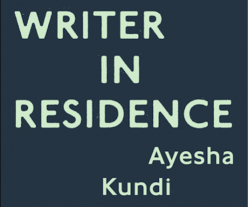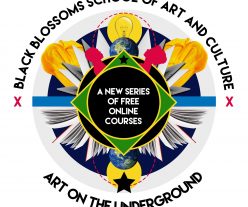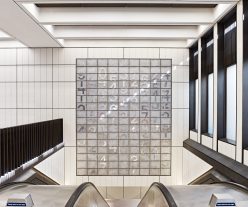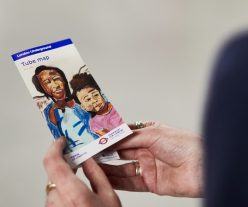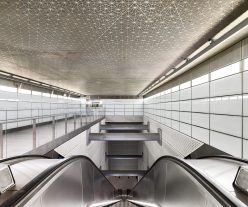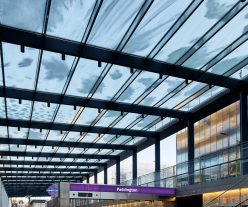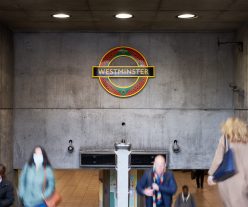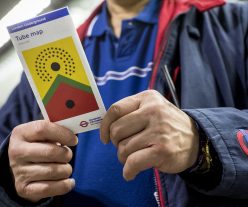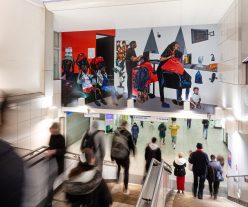Uncommon Observations: The Ground that Moves Us is an ambitious multi-site artwork by London based artist Rhea Storr. The artwork launched on 22 July 2022 and will remain on view for a year.
This new body of work, presented as a series of large-scale captioned photographs, will be exhibited in four London Underground stations across the capital; Stratford, Bethnal Green, Notting Hill Gate and Heathrow Terminal 4.
Central to Rhea Storr’s photographic and film work is her writing and research around the production and circulation of images of Black subjects. This research asks how can an image share knowledge? How might it be a call to come together as a community? How can an image challenge or confront its audience? Can it be a projection of joy and liberation? These questions form the starting point for the six new sequences of photographic artworks for London Underground.
The new work was created using an outdated military surveillance photographic film called aerochrome, once used for monitoring and control and now used with experimental openness. This film turns reflections of infra-red light into vivid shades of red and pink and in contrast centres bodies, drawing focus to human movement. The images were produced during a photoshoot with artist Jade Blackstock and staged in spaces of common land across London.
The photoshoot played with who is looking at who, who is visible and who is in control of the image capture. The movements documented in the images shift between being directed, playful and liberatory. Concerned with the readability of images, particularly those of Black and mixed-race women, Storr’s Art on the Underground commission extends this and proposes that bodies, specifically Black bodies, are not fixed, but instead constantly moving, from being observed and admired to moving to evade or refuse monitoring.
Running parallel to the photoshoot, Storr conducted a series of research conversations with London Underground station staff to gain further understanding of their work in stations. These conversations focussed on their movement and visibility in stations, asking what they notice about people? What aspects of travelling are hidden? How does race, visibility or dress affect the way that they or the people they observe move around the Underground? These conversations informed the artist’s writing process, producing captions for the images. Written in the artist’s voice the captions, with the images, read like stills from a film. As viewers move past these static photographs in stations, along passageways, escalators and through ticket halls, they will experience the artworks as if in motion, catching sequences of Storr’s words and photographs almost as moving images and messages.
Exhibiting these works in public space is key to how we receive their meaning. We encounter these images between information notices, advertising, images for consumption and direction, where our movements are choreographed by the station’s design. This artwork asks if it is possible to re-narrate or revise our experiences, as passengers, members of the public, workers, communities, and individuals, in constant movement and under observation.
